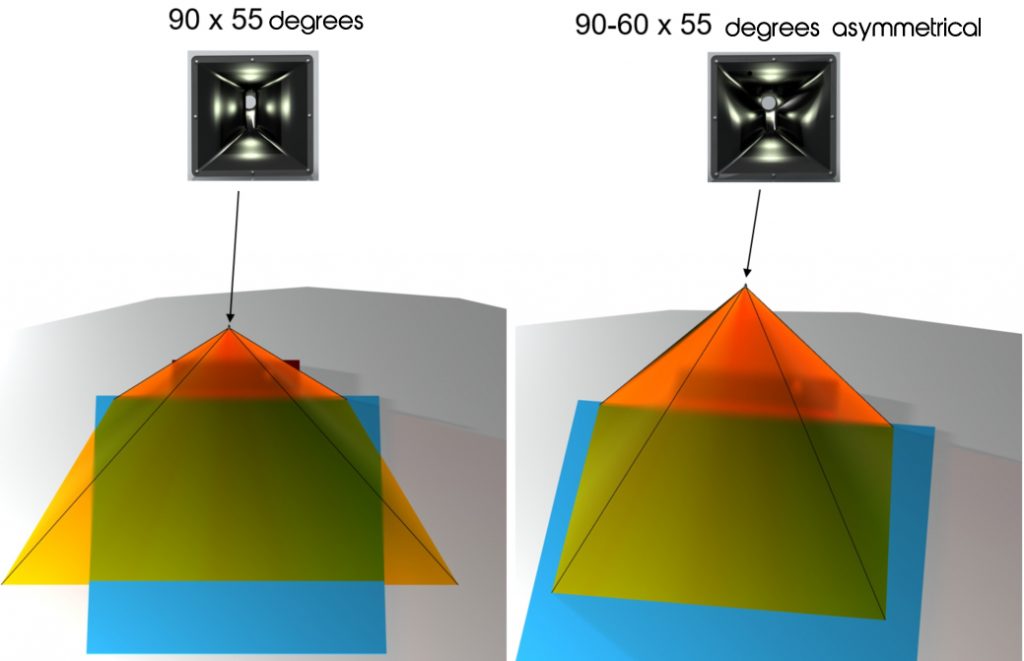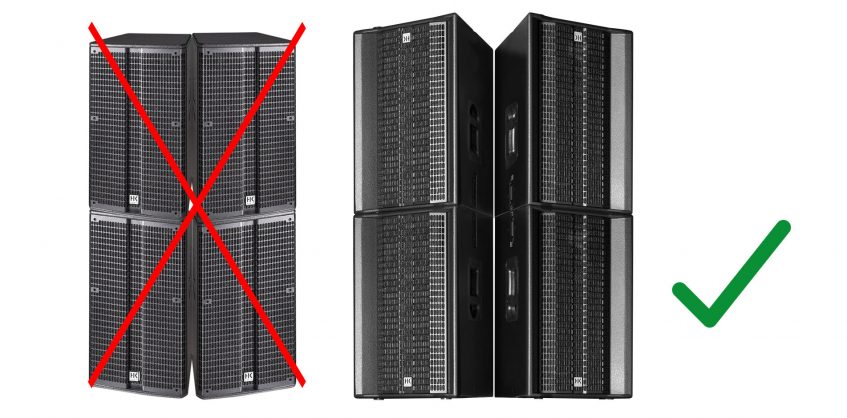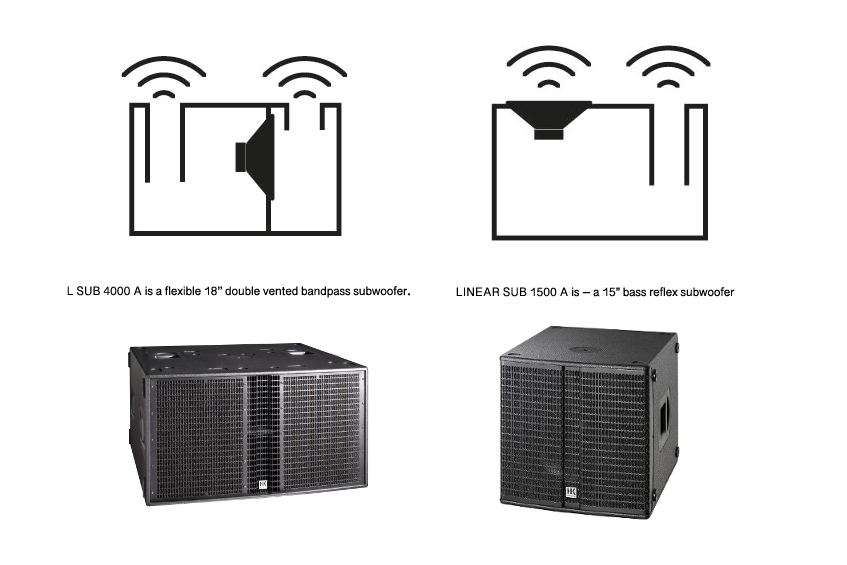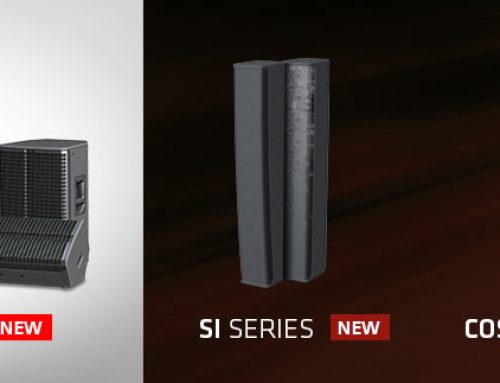Using your PA system to the fullest extent of its capabilities is extremely important. There are a few simple things to keep in mind to do this. However, it can get confusing when you’re dealing with a diversified product portfolio like LINEAR 5 (which features a mixture of full range and long-throw solutions in active and passive variations). In this article, then, we’re going to show you the five LINEAR 5 user errors we’ve come across most often, and explain how you can overcome them successfully!
1. Setting up LINEAR 5 mid/high units in horizontal clusters
Note that L5 112F/FA and 115F/FA models are loaded with an asymmetrical high-frequency horn.
The great advantage of this breed of horn is its unusual directivity. The horns in these LINEAR 5 cabinets have a wide 90-degree throw pattern up front where the audience is closest.
It’s wide enough to cover the area right in front of the stage, so you don’t need an added near-field speaker for small-to-medium-sized stages. The throw pattern narrows to 60 degrees as approaches the rear audience area. (See the picture/illustration.)
With this special throw pattern, LINEAR 5 F models achieve a greater range than conventional symmetrical 90-degree HF horns.
Heads up: When clustering cabinets, make sure that the two speaker systems’ throw patterns do not overlap. The more uniform a speaker’s throw pattern, the better it can be clustered.
The Linear 5 112X/XA speaker, on the other hand, is great for clustering because its pattern is symmetrical with 60 degrees horizontal and 40 degrees vertical directivity.

2. LTS top units: Placing speakers flush against each other
Like other speaker cabinets, the LTS top unit is trapezoidal in shape. The shape of this cabinet suggests that it provides the perfect angle for clustering, which is why some of us like to place cabinets right next to each other with their side panels touching.
That’s a no-go for the LTS top unit. The manufacturer offers an accessory kit that sets the proper angle for this. You may ask why the housing wasn’t laid out for this angle in the first place. The answer is to keep its footprint as compact as it could be.
 3. Vertical clustering: Stacking top units
3. Vertical clustering: Stacking top units

Heads up: The Linear 5 LTS top unit is an exception to that rule. Its Multi-Cell Transformer lets you stack these cabinets head to head to boost the level and extend their reach.
The rule for stacking conventional two-way speakers such as the LINEAR 5 mid/high-range models is simple: Don’t do it. If you stack normal speaker systems, their throw patterns will overlap and you’re going to get nasty comb filtering effects. (See 1 above.)
4. Combining different bass bins
The LINEAR series is modular by design, so you can combine every LINEAR top unit with any LINEAR subwoofer. Some of us may wish to mix and match different types of bass bins. You can do this with LINEAR subs, but not every match is a good one.
Some pairings work fine, others don’t at all. Here are the LINEAR sub combinations that are good to go:
LSUB1200A + LSUB 1500A
LSUB1200A + LSUB 1800A
LSUB1500A + LSUB 1800A
LSUB2000A + LSUB 4000A
Heads up: When you’re combining bass bins, make sure that their enclosures are of the same type.
You don’t want to match up bass reflex, band-pass and horn-loaded housings unless you have outboard controllers and the right measurement tools at hand.
 5. A frequently made mistake when connecting active LINEAR models
5. A frequently made mistake when connecting active LINEAR models
Today’s active speakers give you some very cool options, but you have get the cable connections right.
The LINEAR series’ subwoofers are in the driver’s seat – they send the low frequencies and midrange/ high frequencies to where they need to go.
LINEAR subs have an active crossover installed to separate the frequencies destined for the bass bin and the top unit. That’s why you have to be sure to route the signal into the subwoofer first and to connect the top unit to the port on the sub labeled Line Out Mid/High.

Heads up: Here’s something very important to bear in mind – your system is unlikely to sound the way the manufacturer intended if you simply patch the signal through via the Thru ports!






